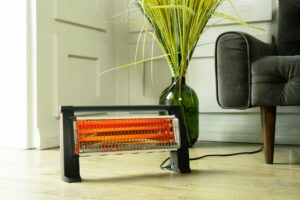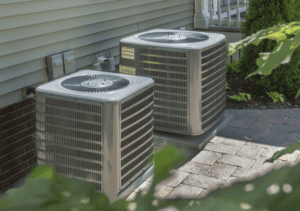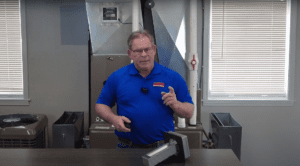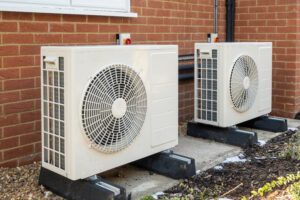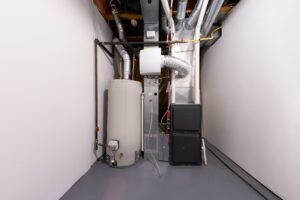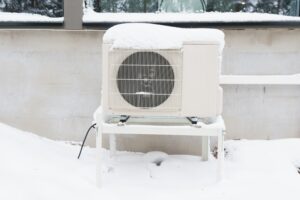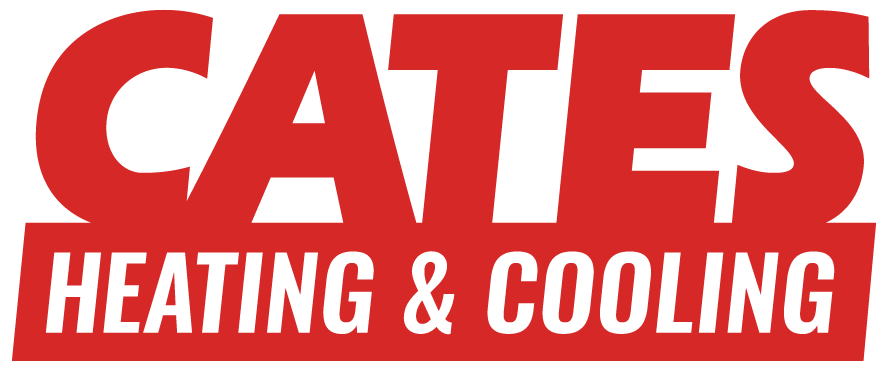Chances are your relationship with the heating and cooling system starts and ends with the thermostat. It’s the face of your home’s comfort. So long as everything feels as expected, the thermostat must be working. But when the furnace is kicking out cold air, or the house is 80 degrees when you think it should be 68, the thermostat must be on the fritz, right? Not so fast, my friend! Our goal here is to describe a conceptual view of a thermostat’s purpose, the most common types, and its varying functions.
To paint a clearer picture of a thermostat’s purpose, we will use a metaphor. Think of your thermostat as an on/off switch to your home’s heating and cooling system. If the lights go out in your house in Kansas City, do you call KCP&L and tell them you may be having a problem with the bedroom light switch? The same holds true for the thermostat, and only on rare occasions do we find a faulty thermostat as the issue, with the exception of someone taking a sledgehammer to it out of frustration. Simply put, the thermostat controls the temperature in a home or building to a predetermined set point, and over the years evolved from controlling a single heat source, to acting as the key point of interaction for heating, cooling, ventilation, humidification, dehumidification, and occupied/unoccupied schedules.
Although they vary in functionality from the simple to complex, don’t misunderstand; the simplest does not mean that the accuracy of the set temperature is compromised. Thermostats have come light years in the past few decades  from mercury bulbs that are subject to mechanical fatigue and incorrect calibration, to the digital thermostats we use today, subject to neither.
Now that we understand a thermostat’s main purpose is to essentially talk to the HVAC system, here are the main types of thermostats for consideration:
Non-Programmable – Set it and forget it! A non-programmable thermostat is the least functional, but easiest to use and understand. Simply set the desired temperature for your heating or cooling system, or have it off and utilize the fan to circulate the air with the blower and call it good. Non-programmable thermostats are great for those who stay home often or still have a Motorola flip phone. The drawback of a non-programmable thermostat relies on the manual effort of energy savings for homeowners. In other words, you need to remember to change the set temperature when leaving the home, but for some, this may be a non-issue. You can learn more by
Programmable – Those familiar with programmable thermostats understand the benefits of adjusting temperature to life schedules in order to realize energy savings. According to the Department of Energy, efficient use of a programmable thermostat can save the homeowner 1% for each degree of setback, if used over an eight-hour continuous period. The government takes a bit of latitude in their estimates, but setting the temperature back 8-15 degrees on a consistent basis, may yield savings 8%-15% over a similar period. Of course, programming your thermostat when you know the house isn’t being used, is an easy way to save on utility bills.
Wireless (the future is here) – Wireless systems uses transmitters for communication between the furnace and the thermostat, which yields a huge benefit; freedom! Wireless systems allow homeowners to relocate a thermostat, upgrade to multi-stage equipment, and easily zone a home without having to run wires. A common problem of inconsistent heating or cooling throughout the house may not have been feasible to solve in the past due to the necessity of tearing out drywall and reconfigure wiring to accommodate a new zone. Wireless thermostats can dramatically reduce this problem.
OK, we understand. You’re asking, Why haven’t you talked about the really cool functions of Wifi systems that are able to adjust my home’s temperature on the phone while sipping lattes in Starbucks, or having my thermostat recognize I’m two blocks away, ensuring a toasty abode upon my entrance? Or even the thermostats that send an e-mail if my home’s temperature is out of range when I’m at work?
Yes, we hear you and thermostats with those capabilities and more are available today. To the extent you want all of the remote capabilities and technological bells and whistles is entirely dependent upon personal preference. But buyer beware: We strongly advise against going to the Big Box store and installing them yourself  there are too many variables in choosing the correct one for your specific system, not to mention try getting your money back if it doesn’t work. Even worse, if you install it incorrectly, you may end up running the A/C and heater at the same time, which basically means it’s over for your system. What a small price to pay for a professional to install your thermostat, adequately educate you about how it works, and most importantly, honor any warranties.
Thermostats have come a long way in the past few decades, and can range from the basic to the complex with an investment of a couple hundred dollars to the thousands. At the end of the day, it’s about understanding your home’s unique comfort issues, customizing a comfort solution to meet those needs, and selecting a thermostat that aligns with your preferences of control and functionality.


